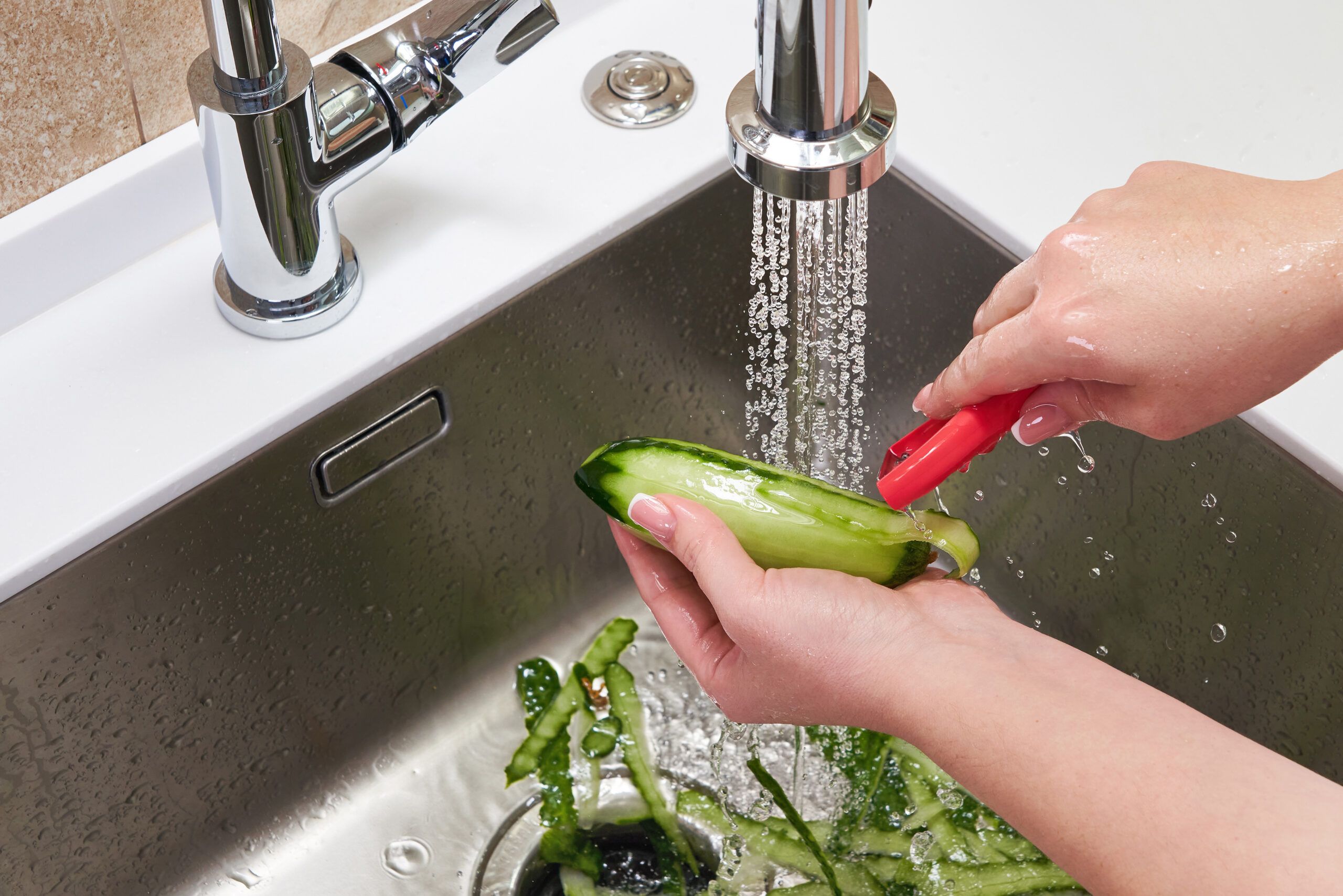Garbage disposals are perfectly concealed under your sink, so it’s easy to forget they’re there. But like any appliance, they need a good cleaning every once in a while—or you could end up with a breeding ground for harmful bacteria or mold. Follow our step-by-step guide on how to clean a garbage disposal to keep it running efficiently.
Why Should You Clean Your Garbage Disposal?
Most of the food you send through your garbage disposal is ground up and washed away by water. However, small pieces can get stuck in the splash guard and grinding chamber and eventually decay. This buildup can produce a foul odor and potentially clog your sink.
In addition, grease and stringy vegetables can leave behind a slimy substance that the disposal can’t pulverize, and this residue can encourage bacteria to develop.
Steps for Cleaning a Garbage Disposal
It’s easy to deep clean your garbage disposal, and you probably already have the cleaning components in your home. All you need is some baking soda, vinegar, ice, table salt, and lemon peels. Using natural ingredients is the best way to clean your garbage disposal, as chemical cleaners can corrode its metal parts.
Step 1: Disconnect the Power
The first step to cleaning your garbage disposal is the most crucial—cut the power leading to it. To disconnect the power, either pull the plug, which is typically connected to an outlet under the sink, or turn off the electricity from the breaker box. Always double-check that you disconnected the right circuit by attempting to turn on the garbage disposal before starting to clean it.
Step 2: Clean the Splash Guard
The rubber splash guard (also known as a gasket or baffle), with its many grooves and crevices, likely has a lot of small food particles and grease trapped underneath it. Pull it out of the drain and thoroughly clean it with an old toothbrush or scrubbing brush and dish detergent. Scrub vigorously, paying particular attention to the underside, to remove any debris or slime.
Step 3: Remove Any Visible Food Debris
While the splash guard is removed, shine a flashlight into the disposal to check for any food particles that may be eluding the grinder. Use tongs or pliers to reach into the disposal and remove the food pieces. Never use your fingers to do this—even when the blades aren’t in motion, they are still very sharp.
Step 4: Pour in Baking Soda and Vinegar
Measure half a cup of baking soda and pour it into the disposal. Let it sit for half an hour so it can work its deodorizing magic. Then, pour in 1 cup of vinegar, which will cause a foamy liquid to bubble up into your sink. Let this chemical reaction zap away the gunk in your disposal for about three minutes, then rinse with hot water from the tap or a pot of boiled water.
Step 5: Grind up Ice and Salt
To clean the blades of the disposal and loosen up any buildup, reinstall the splash guard and reconnect the power, then pour in 2 cups of ice. Add 1 cup of salt on top of that, run the cold water, and turn on the disposal. Let it run until all the ice has been ground up. The salt and ice work together to act as an effective scrub.
Step 6: Grind up Lemon Peels
The last step to cleaning your garbage disposal is to freshen it up with the smell of citrus. Lemon peel is a popular option, but any citrus will do.
Stuff the peel of one citrus fruit into the disposal, run cold water from the tap, and turn on the power. The citrus peel will leave behind a pleasantly fruity scent that refreshes the whole sink.
How Often Should I Clean the Garbage Disposal?
If you use the garbage disposal every day, consider cleaning it once a week. If you don’t use it as often, you could get away with a monthly cleaning. You’ll know if you need to clean the garbage disposal more often if you notice bad smells or unusual noises when you run it.
Foods To Avoid Putting in the Garbage Disposal
Not everything can go down the garbage disposal. Here are some things you shouldn’t put in your garbage disposal:
- Grease
- Fat
- Oil
- Non-food items
- A large amount of vegetables or fruit
- Fibrous vegetables
- Starchy foods, such as pasta, rice, and bread
- Coffee grounds
- Eggshells
- Shellfish
- Seeds
Garbage Disposal Maintenance Tips
Regularly cleaning and properly using the garbage disposal can keep it running smoothly and reduce buildup and bad odors. Follow these tips to keep your device working efficiently.
- Use plenty of water: Whenever you run the disposal, turn the cold water on high and continue to let the water run for up to 20 seconds after turning off the device. This will help carry any food bits away and keep the disposal clean.
- Avoid hot water: Try to avoid using hot water when running the disposal. Hot water will liquify grease and fats, and these could then stick to the blades.
- Regularly clean the garbage disposal: Clean the disposal at least once per month.
- Be careful of what you put in the garbage disposal: Only put foods that can easily grind up into small pieces and wash down the drain in the disposal.
Our Conclusion
The garbage disposal is an essential kitchen gadget that helps cut back on waste and saves you time. But like any other kitchen appliance, it needs regular cleaning and maintenance. Learning how to clean the garbage disposal can prevent the buildup of food, mold, and bacteria and keep your kitchen smelling fresh.

